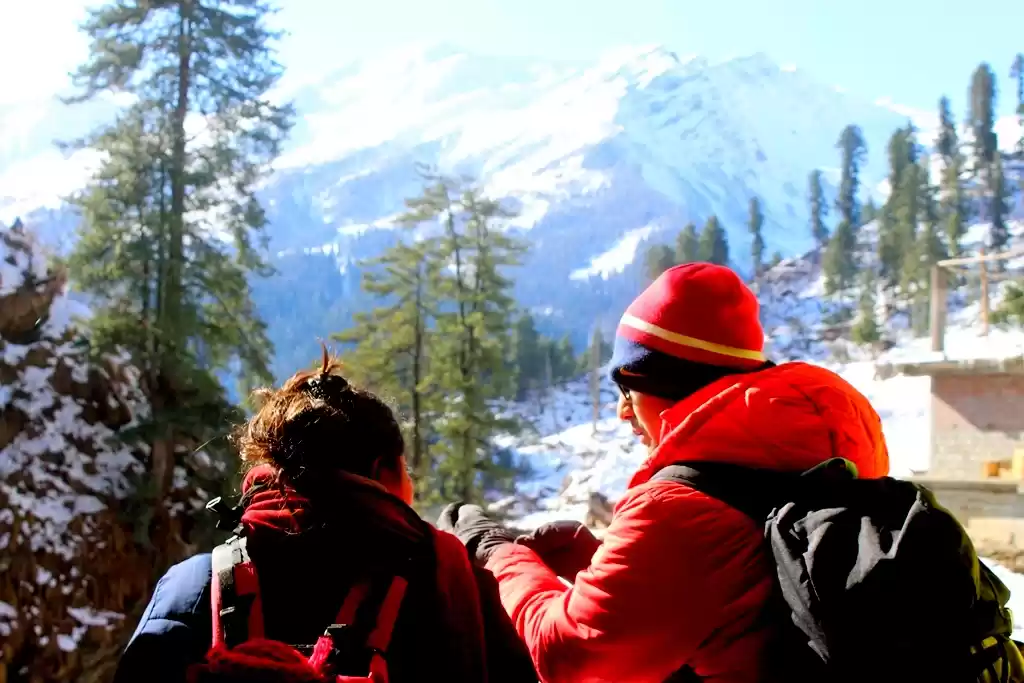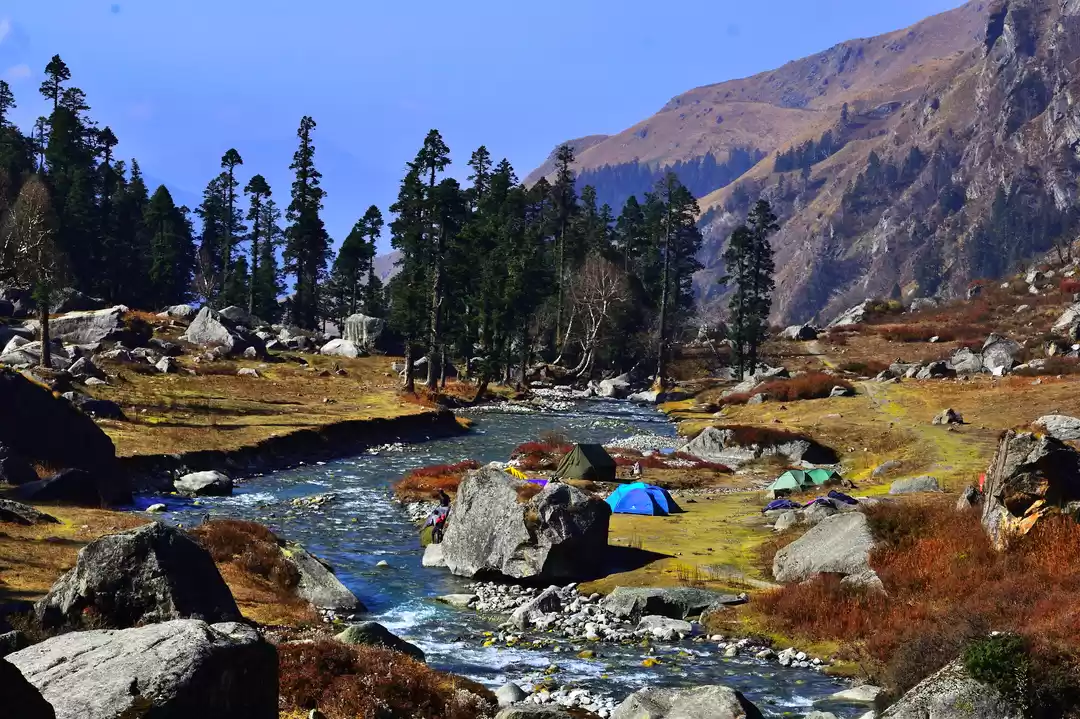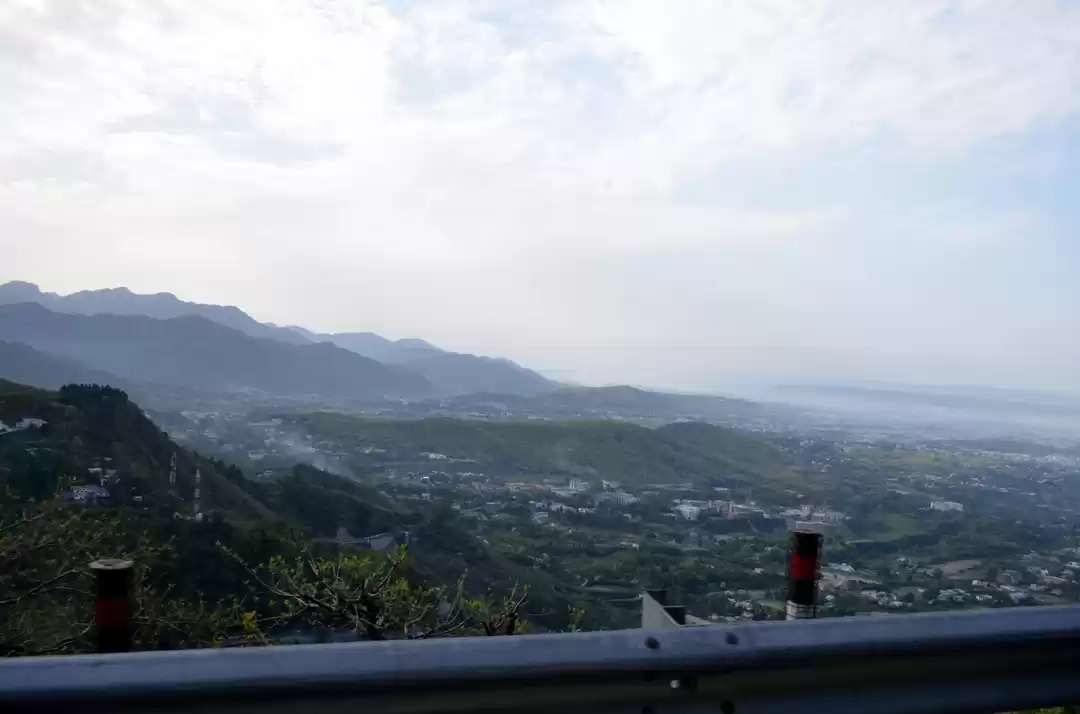A scorching 40 degrees wasn’t the only reason I HAD to get out of the city, but also the fact that my soul yearned for some music by the mountains for over a year now. I cannot explain exactly what drew me to Har ki Dun, but I knew I wanted to leave footsteps here. I’m so pleased that I chose this region as my first Himalayan expedition which unlocked a treasure of magical adventures.
The trek to the spectacular Har ki Dun takes you through valleys alongside a river and tiny villages in the ‘Garhwal Himalayas’ which is located in Uttarakhand, India. Trailing through this valley of Gods was an amalgamation of sceneries, weather and a whole lot of experiences and memories.
One delayed flight, an awfully overstretched bus journey and one uphill car ride later, we finally made it to the base camp in Sankri. I couldn’t contain the excitement to start the real adventure while I saw the sun set behind the hills. The snow-capped mountains were much farther away, hidden behind the greener hills. Watching this sight left me imagining the view when we’d get closer to it in the coming days.


Day 1-2:
Despite not sleeping much the previous night because of the eagerness, we had an early start on the first day. It initiated with an hour’s drive to Taluka, the farthest village that can be accessed by a jeep. From here, the trek begins. I couldn’t have fallen more in love with the trail and the view it composed of, every step of the way. The route for most of the distance was flat land, along the beautiful Supin River. When it got quiet on the trail, the musical waters always kept ringing in our ears.
We reached our first campsite in Puani Garat in the late afternoon. While it was a pleasant weather during the trek, it started getting colder as the sun set in behind the mountains, which was followed by chilly rains the whole night. Yes, it’s unpredictable weather up in the mountains! Today’s trek distance was a total of 12 kilometres.
The second day saw continuous rain and my adrenaline drop down to a heavy low. The periodic breaks in tiny tea stalls and captivating pit stops gave us a respite from the exhausting uphill trek and they were much needed to keep me going. As we got further, it was almost as if I could taste the mountain air. I wanted to become nature. I wanted to be the pine tree. The river. The mud. The grass. The Rhodenderons. The mountain.
Today was the most difficult day for me to trek because it was quite a steep ascend of 7 kilometres throughout, and I was freezing because of the rain. My mind was in complete awe of the changing sceneries with the backdrop of the gorgeous mountains and I knew I wanted to get closer and closer. Mother Nature can turn out to be a real challenge to human beings sometimes- its force so harsh and beautifully heart wrenching. Did it scare me? Maybe. Was I going to give up? Not for a second.
The day seemed to never end but as we drew closer to catching a view of our campsite (in Kalkatya Dar), my spirits were already beginning to rest. It was a slow climb down to the tents but I slid down the mud and went to seek shelter from the unstoppable rain and called it a night soon after. The campsite in Kalkatya Dar was one of the best during the trek. We were surrounded by views of snow mountains on 3 sides. Our tents faced the Bali Mountains and the Atta Peak and further on the left was the Har ki Dun Mountain.
Although the trek distance was comparatively shorter than the previous day’s trek distance, the level of difficulty was high. Since the weather wasn’t in our favour at all today, I missed clicking some good pictures along the trail.






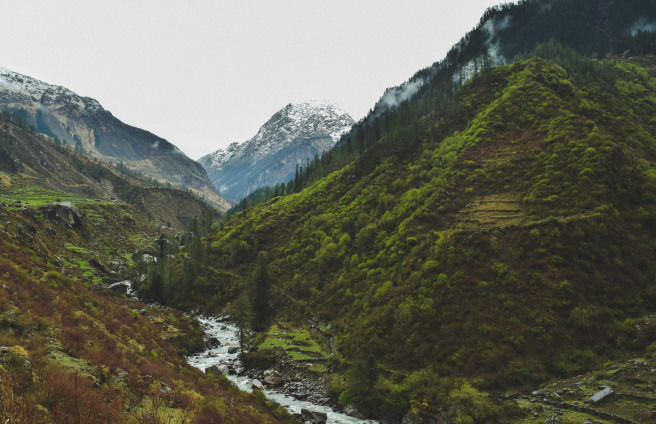



Day 3-4:
We’d come a long way from the first day, and we could feel the closeness to the mountain. After the usual morning ritual of coffee and breakfast, we headed northwards for another exciting day’s trek. The mountains drew closer as we passed through bridges and the pit stops looked like pretty open green meadows where I wanted to spend hours just laying down under the sun.
I’ve seen nothing more beautiful than Day 3’s campsite. Our tents were pitched right in front of the mountain river, with a close view of the mountains. What was once so far away was now so close, bringing us to the last resort of our journey. As the day turned into dusk, the clouds got heavier and the night, colder. There wasn’t anything more than just the sound of the stream at night.
The fourth day was the most exciting and anticipated one as we were about to embark on the Har ki Dun mountain. It was a short ascending walk of about an hour, through snow patched trails. It wasn’t long before we were surrounded only by snow, leaving the sight of greenery behind us.
The feet are rested, the trek poles are dropped, the view is taken in and the silence is heard. I didn’t want to leave this place at this point and all the difficulties faced during the entire climb seemed so distant now – I’d made it.



“Somewhere between the bottom of the climb and the summit is the answer to the mystery why we climb” -Greg Child








Day 5-6:
Day 5 was a rather interesting trek back to Puani Garat. It took us through the ancient Oshla village inhabited by ‘pahadis’ (people living in the mountains). According to a local, Oshla has been around for 200 years, when migrants from Rajasthan moved here. The houses and small buildings are made of wood for protection from heavy snowfall during the winter months. The people here were kind and welcoming, and probably used to seeing a lot of trekkers pass through this route. Spending time with them was heartwarming and that made it difficult to say goodbye.
After a long day covering a distance of 12 kilometres, we were back to our first campsite. It felt like the first day all over again, except that we were now soul-filled and enriched by the mountains.
Day 6 was the trek back to Taluka through the same route as Day 1. This trail truly defines what a walk through nature’s lap is all about. And here we were, walking back one last time to finish our journey. Soon after our last few footsteps in Taluka, we went back to Sankri in a jeep.

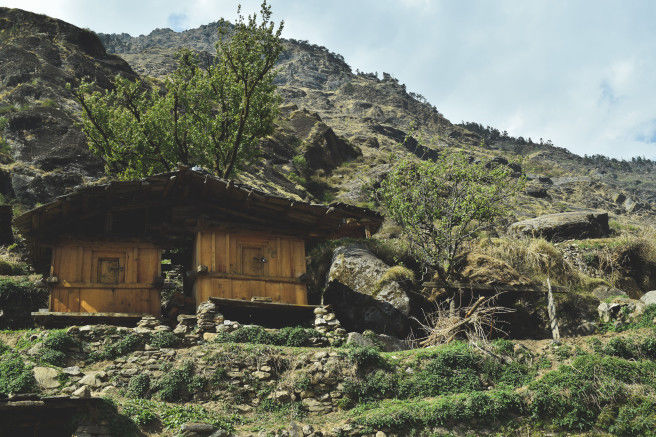




At the higher altitudes in this region, one will come across pine trees, devdar trees and bhuj trees. Hindu mythologies deliver legends about ‘granths’ (texts of Mahabharata) being written on these trees much before 400 B.C. The Himalayas has always been a paradise for bird watchers and Har ki Dun offers no less if you have the passion and patience to capture your sight.
It was a regretful goodbye to the mountains and I cannot wait to go back already- next time for a longer period. To conclude this travel account, I’m going to quote a small excerpt from Paulo Coelho’s ‘Like the Flowing River’-
Be joyful when you reach the top: Cry, clap your hands, shout out loud that you made it; let the wind (because it is always windy up there) purify your mind, cool your hot, weary feet, open your eyes, blow the dust out of your heart. What was once only a dream, a distant vision, is now part of your life. You made it, and that is good.

This blog was originally published on 'Hues of Indulgence







